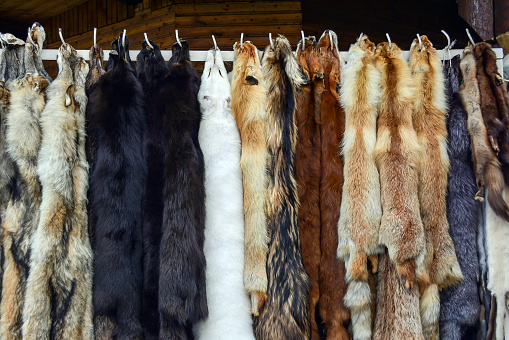Clothing Tips For Different Hunting Layers
If you already enjoy spending time outside, you know the importance of wearing several layers to stay warm when exercising. Likewise, adjusting to the hunt’s walking and waiting requirements and the shifting temperatures of fall days becomes more effortless when you do so.
However, it is more crucial to make an initial investment in the proper products the more you use your hunting clothing.
Will most of your hunting attire be utilized for hunting that requires a lot of movement in fair weather, or does it need to be acceptable for hunting in foul weather while you stand still?
Moreover, quality is a crucial element. If you must purchase hunting clothing on a tight budget, it is wise to spend more on the outside layer of clothing and less on the inner and intermediate layers (outer fabric). The question is, what clothing is less strenuous to pick yet ideal for hunting? As unconventional as it might be, woollen clothes give the perfect solution.
What exactly are wool hunting clothes?
Consider a herd of sheep in a far-off paddock. The sheep might be in Tibet’s highlands or the deserts of Australia. Remember, sheep must maintain a constant body temperature while enduring extreme weather conditions such as the blazing sun, chilly rain, strong winds, and others wherever they are. How are they able to achieve this? Wool! When it’s hot, wool hunting clothes keep you ventilated by allowing air to pass through their air pockets. Wool swiftly wicks sweat away to keep you from feeling clammy and overheating. When it’s cool, air pockets in wool keep body heat close to the skin and prevent it from escaping into the frigid air. Therefore, a wool base layer will be warmer than a synthetic base layer of the same weight because wool has a high warmth-to-weight ratio.
Benefits of wool clothing for hunting
- It is gentle on the skin
Small-diameter (superfine) fibres of contemporary wool, particularly Merino wool, don’t prickle, itch, or bother your skin. They have a delightfully soft and silky texture.
- It is resistant to odours
A hunt is a physically demanding activity that requires long hours of hiking, stalking, or waiting while experiencing highs of adrenaline. As a result, you will sweat and generate a stench. When you blink, your mark will be gone if he smells you.
Natural antibacterial qualities in wool prevent bacteria from growing on its fibres. These bacteria bring on unpleasant bodily odours. Your wool hunting clothing will prevent you from being “winded” by the game and require less washing than most other clothing items.
- It wicks sweat
Wool draws moisture (such as sweat) from your skin and allows it to dissipate into the atmosphere. Wool has a 30% moisture absorption capacity without feeling wet to the touch.
Wool’s hydrophobic outer fibres also deflect outside moisture (such as rain, snow, and splashes), which keeps clothing feeling dryer for longer.
Basics of Layering
Baselayers, mid layers, and insulating or outer layers are the usual layering components. Simple enough, but temperature management under a broader range of circumstances is why numerous layers are preferable to a few heavy insulating layers.
To emphasize the point, you would probably be uncomfortable if you went on a hunting trip wearing simply a long sleeve shirt and a full-down suit the size of Mount Everest. If you have five or six layers, you can add or remove layers as necessary to find the correct number of layers to wear in the morning, during the day as it heats up, and at night.
- Base layer
The clothing that touches your skin falls under this category. The main job of base layer clothing is to remove moisture from your body while keeping you dry and toasty. Even though the clothing provides little insulation, lightweight base layers will wick sweat away from your skin. Therefore, warm weather is better for them. Mid-weight clothes will be sufficient for cold weather to keep you dry without the risk of overheating. Cold and rough weather call for heavyweight base layers.
Merino wool, silk, polypropylene, and polyester are the ideal materials for base layers.
- Mid layer
With your base layer, the mid-layer helps you stay warm by wicking away moisture from your body and retaining heat. As your most adaptable layer, you can remove it if you’re too warm or double or triple up if you’re cold. Mid-layers are available in various fabrics, much like your base layer. Mid-layers made of polyester and merino wool perform admirably, but nylon performs the best.
- Outer layer
Whether there is wind, rain, snow, and any other element that circumstances may bring your way, your outer layer should protect you. It serves as your initial line of defence and must endure obstacles in the landscape, like branches and thorns. Consider the weight and packing convenience of this layer while choosing it; depending on the weather, you might decide to pack it in your bag.
Final Remarks
Knowing how to layer correctly will enable you to hunt in any weather that mother nature may throw at you. Layering is fundamentally about comfort, efficiency, and controlling body temperature. Even more crucially, wearing layers stops you from overheating or freezing, which keeps your mind sharp. It also helps develop a positive attitude and allows you to hunt longer rather than abandoning it early due to discomfort. And when done correctly, layering makes your pack lighter and more compact. Aside from the warmth and comfort of your hunting clothes, go for details you’ll appreciate once you’re in the field, like extra pockets and Zippers for more ventilation, socks, gloves, and headgear.
